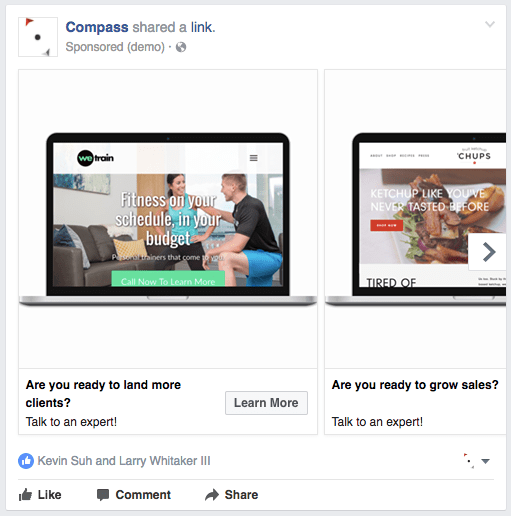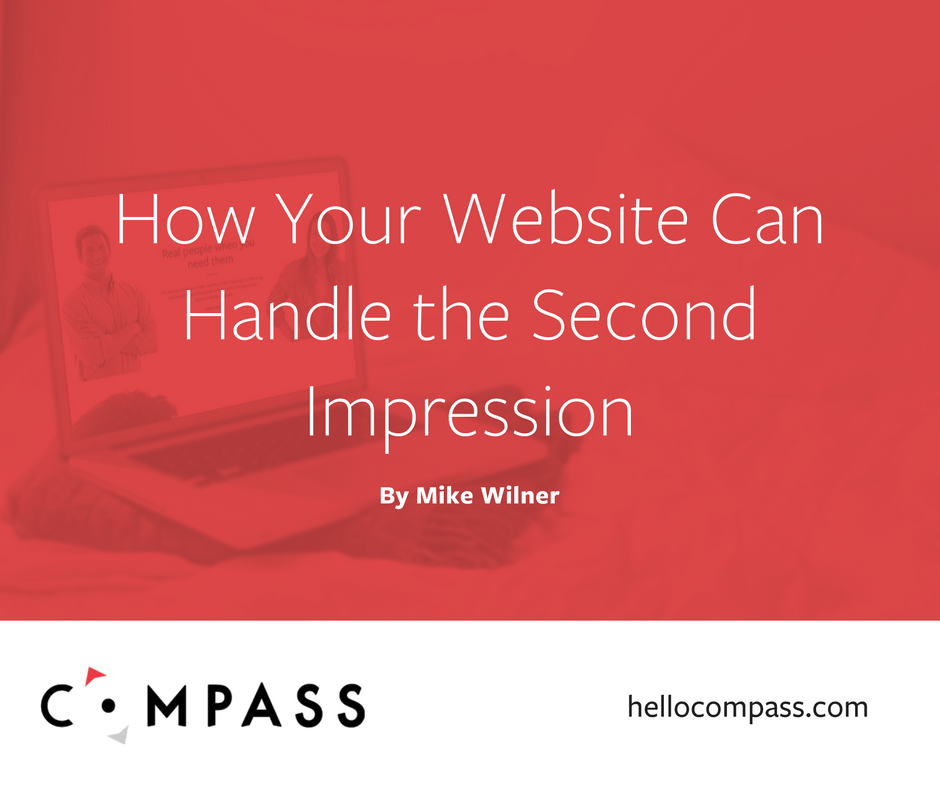This is a guest post from Mike Wilner, CEO of Compass, a company that works with small businesses to create affordable (and easy) websites.
“A website is your first impression online.”
Ever heard that before? It’s a line used by a lot of web service marketers to scare people into investing in a website.
The truth is, a website is rarely ever the first impression for a potential customer–it’s almost always the second impression. For example, if you’re at a networking event, you are the first impression. 
In fact, for any awareness marketing tactic, your website is not the first impression.
If you’re running Facebook ads, the ad creative is the first impression.

If you’re investing in search engine optimization (SEO) your meta description is the first impression

In all of these cases, the website is the second impression, and the value of a website comes from its ability to:
- Deliver a strong second impression that guides leads on the path to becoming customers (a higher conversion rate on your first impressions)
- Handling the workload of secondary impressions (reducing the time you must invest in selling and educating leads).
Here are some simple steps to ensuring that your website makes a great second impression to improve the ROI of your marketing.
1. Anticipate the questions leads will have after a first impression.
Let’s say you’re at a networking event. While you can give someone the elevator pitch for your business, you won’t be able to spend an hour going through the details. After a first impression, there are always questions someone will have before wanting to work with you, no matter how well the first impression went.
For example, even if I have a fantastic first conversation with someone, I know that they’ll have the following questions about Compass:
- Do we do good work?
- Can we support the features they need for their website?
- What does the process look like?
By anticipating these questions, we created our own website which addresses these questions head-on, resulting in a great second impression when someone goes to our website after meeting me.
- Do we do good work? → show a portfolio of our work
- Can we support the features they need for their website? → List out common features that we support
- What does the process look like? → Explain the process through a “How it Works” page
2. Have a clear path to becoming a customer
For any marketing goal (i.e. purchasing a product, becoming a client), it’s best to have one single call-to-action so that leads have zero confusion about how to take the next step.
On our website, there’s one primary call-to-action– to schedule a consultation. There’s no ambiguity for website visitors on what the next step is.
Websites that have too many calls-to-action (or none) may make a great second impression by anticipating the questions leads will have and addressing them head-on, but if there’s no way to capitalize on a great second impression, then the website isn’t capturing that value!
3. Make more first impressions!
If your website makes a great second impression and provides a clear path to becoming a customer, then you can focus on making more first impressions!
At a networking event, you can spend less time explaining the details of your process, and instead direct people to your website to learn more. If you can trust your website with the second impression, then you can talk to more people and get more leads. The same is true for any awareness marketing tactic, whether it be PR, social media, or anything else.
Being able to trust your website with some of the heavy lifting of the second impression can set your free as a marketer and help you get more customers with less investment.
Finding the time and resources to develop a website is a common problem for solos and small businesses. The ease and affordability of Compass (sites can be as low as $700, with most ranging from $1000 – $1500) was so compelling that we signed on as an affiliate partner (and you can too). If you're interested in a website for yourself or a client, you can visit our affiliate partner link here, and take advantage of the special deal for the Solo PR Pro community or use the non-affiliate link here.


0 Comments